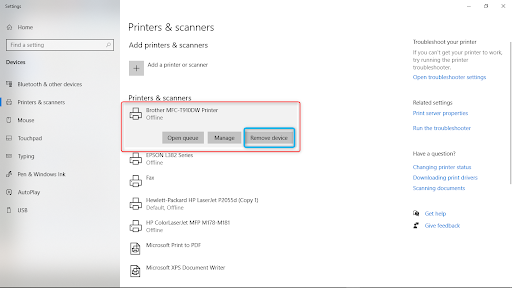
Here, find Print Spooler and uncheck the box before it. Yet another way of turning off the Print Spooler service is to do so from System Configuration. Since Group Policy Editor is only a Windows 10 Professional feature, Home users will have to use any of the other options to stop the Print Spooler service. Note: This option is not available for Windows 10 Home users. The Print Spooler service will not stop, preventing you from potentially being hacked. On the right, double-click on Allow Print Spooler to accept client connections. Then navigate to Computer Configuration > Administrative Templated > Printers on the left.

This will open up the Print Spooler properties. Now, scroll down the list of services and find Print Spooler, then double-click on it. If you’re uncomfortable using PowerShell commands to get things done, a simpler way is to disable the service from the ‘Services’ window. Set-Service -Name Spooler -StartupType Disabled Now, type in the following command to prevent it from starting again automatically: This will stop the Print spooler service immediately. Now, type in the following command and press Enter: Press Start, type Powershell, and click on Run as administrator. Here are a few ways you can disable the Print Spooler service on Windows 10. Related: Will Windows 10 get native Android apps support? How to turn off Print Spooler on Windows 10 As the patch for the latest vulnerability is not available as of yet, the only workaround is to manually disable the Print Spooler service. Granted that an attacker has to have physical access in order to execute code on a system to exploit this vulnerability, but it is still a scary prospect to have. An attacker could then install programs view, change, or delete data or create new accounts with full user rights.” An attacker who successfully exploited this vulnerability could run arbitrary code with SYSTEM privileges. Stop and Disable the service on any DC now! /s4yE2VVl5IĪccording to Microsoft – “An elevation of privilege vulnerability exists when the Windows Print Spooler service improperly performs privileged file operations. If you have the "Print Spooler" service enabled (which is the default), any remote authenticated user can execute code as SYSTEM on the domain controller. Microsoft is clearly frustrated with these ever-emergent vulnerabilities and, in the absence of a patch just yet, has called for customers to disable it themselves. Now, mere days later, another issue that is being addressed as CVE-2021-34481 has been identified. After the original vulnerability (dubbed CVE-2021-1675) was patched in June, another similar flaw emerged, dubbed CVE-2021-34527, or the PrintNightmare. This is not the first time that there’s an issue discovered with the Print Spool service. Why Microsoft wants you to temporarily disable Print Spooler on Windows 10 When will Microsoft release an update to tackle this vulnerability?.When did the Print Spooler vulnerability get introduced?.Is this the same vulnerability as PrintNightmare?.How to turn on Print Spooler on Windows 10.How to turn off Print Spooler on Windows 10.Why Microsoft wants you to temporarily disable Print Spooler on Windows 10.You can also try cleaning out everything possible that might be hanging the Printer Spooler. If there is any software installed for other printers in Add/Remove Programs I would uninstall it all. Obtain updated software from your printer manufacturers and reinstall only the items you need. Anything listed in the Control Panel under Printers & Faxes I would do away with. This may include PDF writer or faxing software as well. Try uninstalling all printers and printer software from the computer and start from scratch. If the Print Spooler service keeps stopping after your restart it, the problem is most likely related to corrupted printer drivers that are installed on the computer. Restart the computer and try to install the printer again.This sets the Spooler service to start automatically when you restart the computer.

Double-click the “ Printer Spooler” service, and then change the startup type to “ Automatic“.Type “ services.msc“, then select “ OK“.Press “ Window key” + “ R” to open the Run dialog.

To solve this error, try the following steps.


 0 kommentar(er)
0 kommentar(er)
